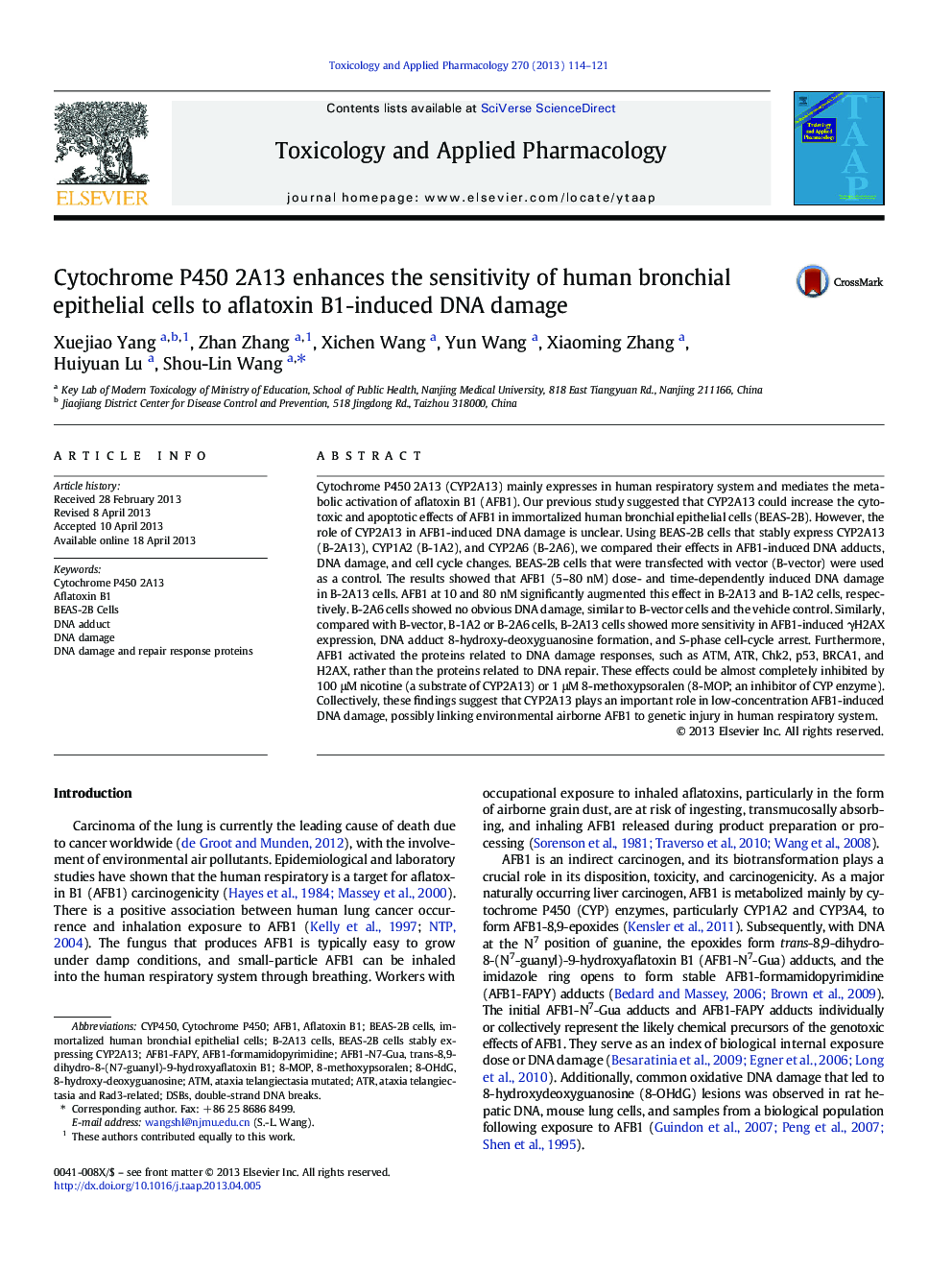| کد مقاله | کد نشریه | سال انتشار | مقاله انگلیسی | نسخه تمام متن |
|---|---|---|---|---|
| 2568741 | 1128480 | 2013 | 8 صفحه PDF | دانلود رایگان |

• CYP2A13 plays a critical role in low concentration of AFB1-induced DNA damage.
• B-2A13 cells were more sensitive to AFB1 than B-1A2 cells and B-2A6 cells.
• AFB1 dose- and time-dependently induced DNA damage in B-2A13 cells
• AFB1-induced DNA adducts and damage can be inhibited by nicotine and 8-MOP.
Cytochrome P450 2A13 (CYP2A13) mainly expresses in human respiratory system and mediates the metabolic activation of aflatoxin B1 (AFB1). Our previous study suggested that CYP2A13 could increase the cytotoxic and apoptotic effects of AFB1 in immortalized human bronchial epithelial cells (BEAS-2B). However, the role of CYP2A13 in AFB1-induced DNA damage is unclear. Using BEAS-2B cells that stably express CYP2A13 (B-2A13), CYP1A2 (B-1A2), and CYP2A6 (B-2A6), we compared their effects in AFB1-induced DNA adducts, DNA damage, and cell cycle changes. BEAS-2B cells that were transfected with vector (B-vector) were used as a control. The results showed that AFB1 (5–80 nM) dose- and time-dependently induced DNA damage in B-2A13 cells. AFB1 at 10 and 80 nM significantly augmented this effect in B-2A13 and B-1A2 cells, respectively. B-2A6 cells showed no obvious DNA damage, similar to B-vector cells and the vehicle control. Similarly, compared with B-vector, B-1A2 or B-2A6 cells, B-2A13 cells showed more sensitivity in AFB1-induced γH2AX expression, DNA adduct 8-hydroxy-deoxyguanosine formation, and S-phase cell-cycle arrest. Furthermore, AFB1 activated the proteins related to DNA damage responses, such as ATM, ATR, Chk2, p53, BRCA1, and H2AX, rather than the proteins related to DNA repair. These effects could be almost completely inhibited by 100 μM nicotine (a substrate of CYP2A13) or 1 μM 8-methoxypsoralen (8-MOP; an inhibitor of CYP enzyme). Collectively, these findings suggest that CYP2A13 plays an important role in low-concentration AFB1-induced DNA damage, possibly linking environmental airborne AFB1 to genetic injury in human respiratory system.
Figure optionsDownload high-quality image (174 K)Download as PowerPoint slide
Journal: Toxicology and Applied Pharmacology - Volume 270, Issue 2, 15 July 2013, Pages 114–121